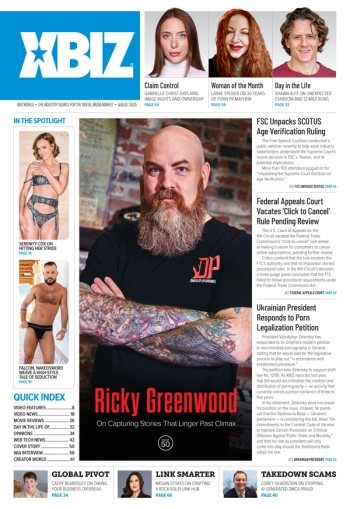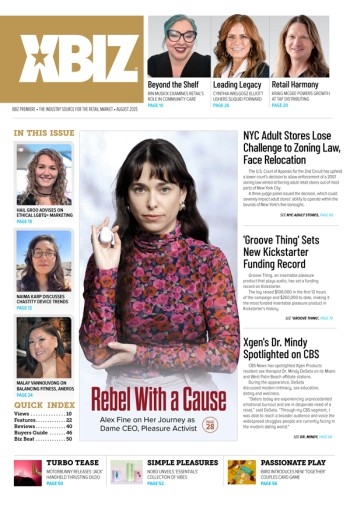If you’ve been paying any attention to the news lately, you’ve seen the increased media coverage of transgender and gender-diverse people. While not all of the press has been positive, I’ve seen plenty that is. The more we can talk about the experiences of transgender and gender-diverse folks, the more we can help create a truly inclusive world. Sex toy retailers are in a unique position to support these positive changes, but a lot of cisgender people are worried about how to do that.
First off, let me explain “cisgender,” since you may not be familiar with the term. The prefix “trans” means to cross over. Transport means to move from one place to another, and translate means to change from one language to another. “Cis” means to stay on the same side. So a transgender person moves from one gender to another, while a cisgender person stays in the gender they were assigned at birth.
There are many different ways that people experience gender, and lots of different ways that people talk about it.
I use this word because if we categorize people as “people/transgender people,” we reinforce the idea that cisgender folks are “normal.” Similarly, when we talk about “people/gay people” or “people/people of color,” we reinforce the idea that heterosexual folks or white people are the norm. If we want to be inclusive, it’s important to use language that shifts us out of those unconscious biases.
We also need to acknowledge that gender is far more complex than people used to think. There are many different ways that people experience gender, and lots of different ways that people talk about it. One of the difficulties that cisgender people face is that the language is always changing, so it’s hard to keep up to date. Another is that people who don’t conform to stereotypical gender roles receive intense scrutiny, backlash, anger and shaming from the world around them. That can make folks wary of well intentioned but clueless cisgender folks. Unfortunately, that can lead cisgender people to worry about saying the wrong thing, which means that the conversation never moves forward. I believe that sex educators have a responsibility to talk about these topics. So here are some steps you can take to make that happen.
The first step you can take is to use language that doesn’t assume the gender of anyone until that information is disclosed. For example, you might tell someone that a particular toy is easy to use with a partner, rather than with a boyfriend or a girlfriend. After all, you have no idea who this customer is having sex with. Of course, if they refer to a girlfriend, you can use that word from then on. But you might still use neutral language since they might have other partners of other genders.
Similarly, you can use language that doesn’t assume anything about your customer’s anatomy. If someone asks about vibrators, you might say something like, “this model works great on the clitoris or the penis.” That creates room for the possibility that this customer is transgender, rather than assuming that you know what genitals they have. (It also gives you a chance to teach them about ways to use sex toys that they might not have thought of. Pro tip: vibrators feel great on the penis, too!) Again, if they tell you that they want something for clitoral or penis stimulation, you can use that language for the rest of the conversation.
Along those lines, you can talk about sexual products in terms of anatomy, rather than gender. For example, you can describe them as cock rings and masturbation sleeves rather than “men’s toys,” since not all men have penises. Or you can explain how G-spot vibrators work without referring to women, since not all women have G-spots and some men do. If you have a customer who presents as female, you can ask if she would like information about the G-spot. If she says no, it might be because she already knows about it. But it might also be because that’s not how her anatomy works. Keeping things focused on anatomy gives the customer the most space to feel welcomed in your store.
A final tip — stop referring to “men and women” or “both genders.” Try phrases like “people of all genders” to show that you understand that there are more than two. Try talking about “people” or “anyone” or “people of any gender” (as in, “people of any gender can enjoy kink/anal play/etc.”) You can also use “they” if you don’t know someone’s gender, or even if you do but you want to use neutral language Most cisgender heterosexual folks won’t even notice, but queer, transgender, and other gender non-conforming people will pick up on it and appreciate it.
If you’re feeling worried about doing all of this, that’s ok. We start to learn gender roles before we learn how to speak, so it’s really hard to unpack our assumptions and beliefs. Unless you spend a lot of time working on it, it’s easy for old habits to come out. When that happens, a simple “I’m sorry. I meant to say...” works really well. One great way to minimize how often you slip up is to practice. Try using gender-inclusive language when you’re talking with your friends, your housemates, your partners. Try using it when discussing non-sexual topics. “I was talking to the person at the grocery checkout and they said...” The more you practice it, the easier it gets. And the more you use inclusive language as your default, the less you have to think about it.
Ultimately, gender-inclusive language is about making room for all people of all genders and sexual orientations. It can take a little time to figure it out, but it goes a long way towards helping your customers feel welcomed and respected. And that’s an essential part of making your store a place where people want to shop.
Charlie Glickman PhD is a sexuality speaker, trainer, writer, blogger, and coach. He’s an AASECT-certified sex educator and has been working in this field for over 20 years. Charlie is the co-author of The Ultimate Guide to Prostate Pleasure: Erotic Exploration for Men and Their Partners. Find out more about him at www.charlieglickman.com or on Twitter and Facebook.







